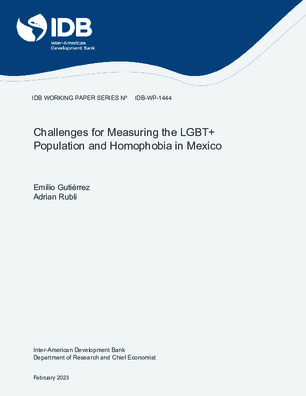Challenges for Measuring the LGBT+ Population and Homophobia in Mexico
Date
Feb 2023
We contribute to understanding the challenges for estimating the size of the LGBTQ population and discriminatory sentiment against it by surveying 10,003 individuals, whom we randomize into a direct question or an Item Count Technique (ICT) elicitation group. The fractions of the population that self-identify as LGBTQ, that reports having had same-sex sexual experiences, and that has felt same-sex attraction are higher for our sample than those obtained from government surveys. However, the difference between estimates recovered from our direct questions and through the ICT does not always have the expected sign. The negative relationship between age and self-identifying as non-heterosexual is present both in the government survey and in our direct question sample but vanishes when measured with the ICT. The positive correlation between age and homophobic sentiment is present across samples and elicitation techniques. We find no significant variation in all measures for formal vs informal workers.




